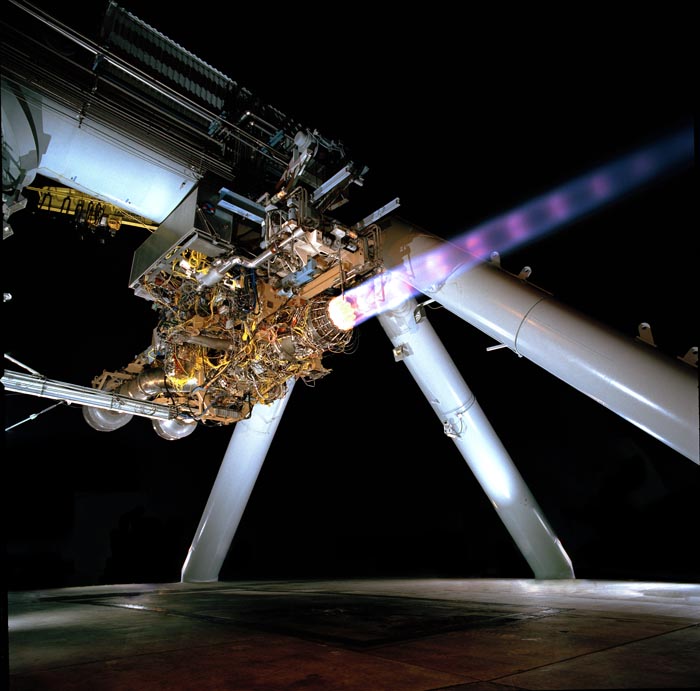Fighter Jet News
F-35 Lightning II News
P&W awarded $571m engine contract
July 26, 2009 (by
Eric L. Palmer) -
The U.S. Department of Defense has awarded Pratt & Whitney a $571 million production contract for F135 engines to power the F-35 Lightning II.
This low rate initial production (LRIP) contract covers production, sustainment, spare parts and engineering support for the third lot of F135 engines, including 10 conventional take-off and landing (CTOL) and 11 short-takeoff/vertical-landing (STOVL) engines for F-35 aircraft. Additionally, Pratt & Whitney has been awarded a $113 million contract for long lead material procurement to produce 32 F135 engines for the fourth lot of F135 engines.
The engine war between Pratt and Whitney’s F135 engine and the General Electric/Rolls Royce F136 engine has been ongoing for years. However, if recent statements coming out of Washington are to be believed, that war could be over soon.
Back in May President Obama stated, “The Defense Department is already pleased with the engine it has. The engine it has works. The Pentagon does not want - and does not plan to use - the alternative version. That's why the Pentagon stopped requesting this funding two years ago. Yet it's still being funded."
Last week, the Senate voted to support the amendment by Sen. Joseph Lieberman to ban continued spending on the alternate engine. The Senate rejected 38-59 a competing amendment by Sen. Evan Bayh to withhold 10 percent of the funding for the Joint Strike Fighter unless sufficient money was made available to continue development of an alternate engine.
Both Senators Lieberman and Bayh are of course cheering for their home districts where work is done for the competing engines. Also, there is no extra money sitting around to fund an alternate engine with U.S. tax dollars. Any U.S. funding for the alternate engine will mean money is taken away from build numbers of F-35 airframes. While the idea for an alternate engine may have seemed good ten years ago, various delays and cost rise to the F-35 program means that funding for the program sits on a very thin margin.
A recent U.S. Government Accountability Office (GAO) study concluded that the initial investment in a second JSF engine would be recovered with simply a 10 percent overall savings driven by competition. The GAO added: "DOD-commissioned reports and other officials have said that nonfinancial benefits in terms of better engine performance and reliability, improved industrial base stability, and more responsive contractors are more likely outcomes under a competitive environment than under a sole-source strategy."
It is unknown how Joint Strike Fighter partners like the U.K. will respond if U.S. funding for the GE/RR F-136 engine gets cut.
The engine war between Pratt and Whitney’s F135 engine and the General Electric/Rolls Royce F136 engine has been ongoing for years. However, if recent statements coming out of Washington are to be believed, that war could be over soon.
Back in May President Obama stated, “The Defense Department is already pleased with the engine it has. The engine it has works. The Pentagon does not want - and does not plan to use - the alternative version. That's why the Pentagon stopped requesting this funding two years ago. Yet it's still being funded."
Last week, the Senate voted to support the amendment by Sen. Joseph Lieberman to ban continued spending on the alternate engine. The Senate rejected 38-59 a competing amendment by Sen. Evan Bayh to withhold 10 percent of the funding for the Joint Strike Fighter unless sufficient money was made available to continue development of an alternate engine.
Both Senators Lieberman and Bayh are of course cheering for their home districts where work is done for the competing engines. Also, there is no extra money sitting around to fund an alternate engine with U.S. tax dollars. Any U.S. funding for the alternate engine will mean money is taken away from build numbers of F-35 airframes. While the idea for an alternate engine may have seemed good ten years ago, various delays and cost rise to the F-35 program means that funding for the program sits on a very thin margin.
A recent U.S. Government Accountability Office (GAO) study concluded that the initial investment in a second JSF engine would be recovered with simply a 10 percent overall savings driven by competition. The GAO added: "DOD-commissioned reports and other officials have said that nonfinancial benefits in terms of better engine performance and reliability, improved industrial base stability, and more responsive contractors are more likely outcomes under a competitive environment than under a sole-source strategy."
It is unknown how Joint Strike Fighter partners like the U.K. will respond if U.S. funding for the GE/RR F-136 engine gets cut.
Related articles:
Forum discussion:
Tags
- Goodrich signs agreement with Turkey's Alp Aviation ( 2009-07-21)
- Four UK Companies Win F-35 Work ( 2009-07-16)
- F-35 radar makes showing at electronic attack exercise ( 2009-07-03)
- F-35 Lightning II news archive
Forum discussion:
- Start a discussion about this article in the F-35 forum.
Tags

